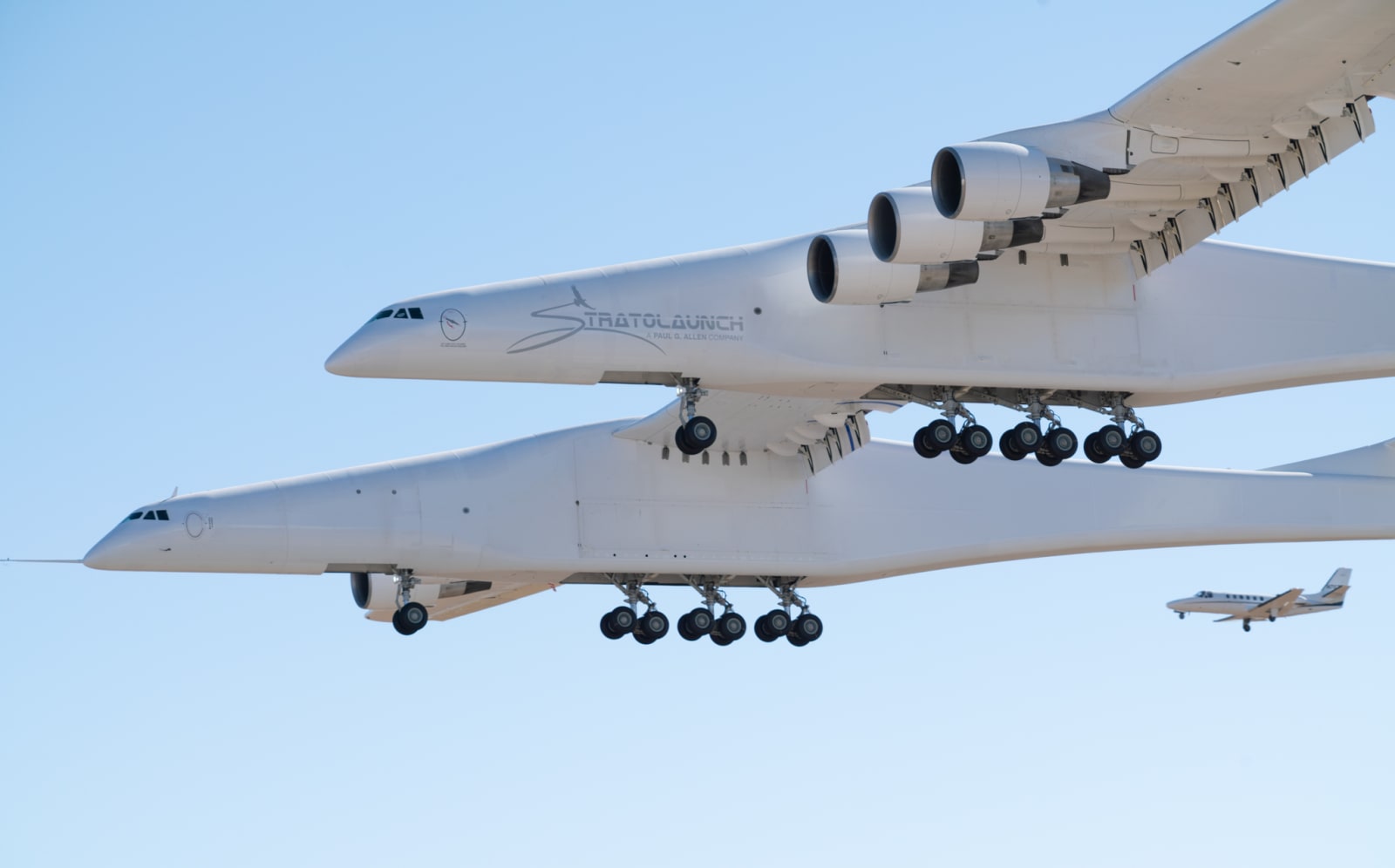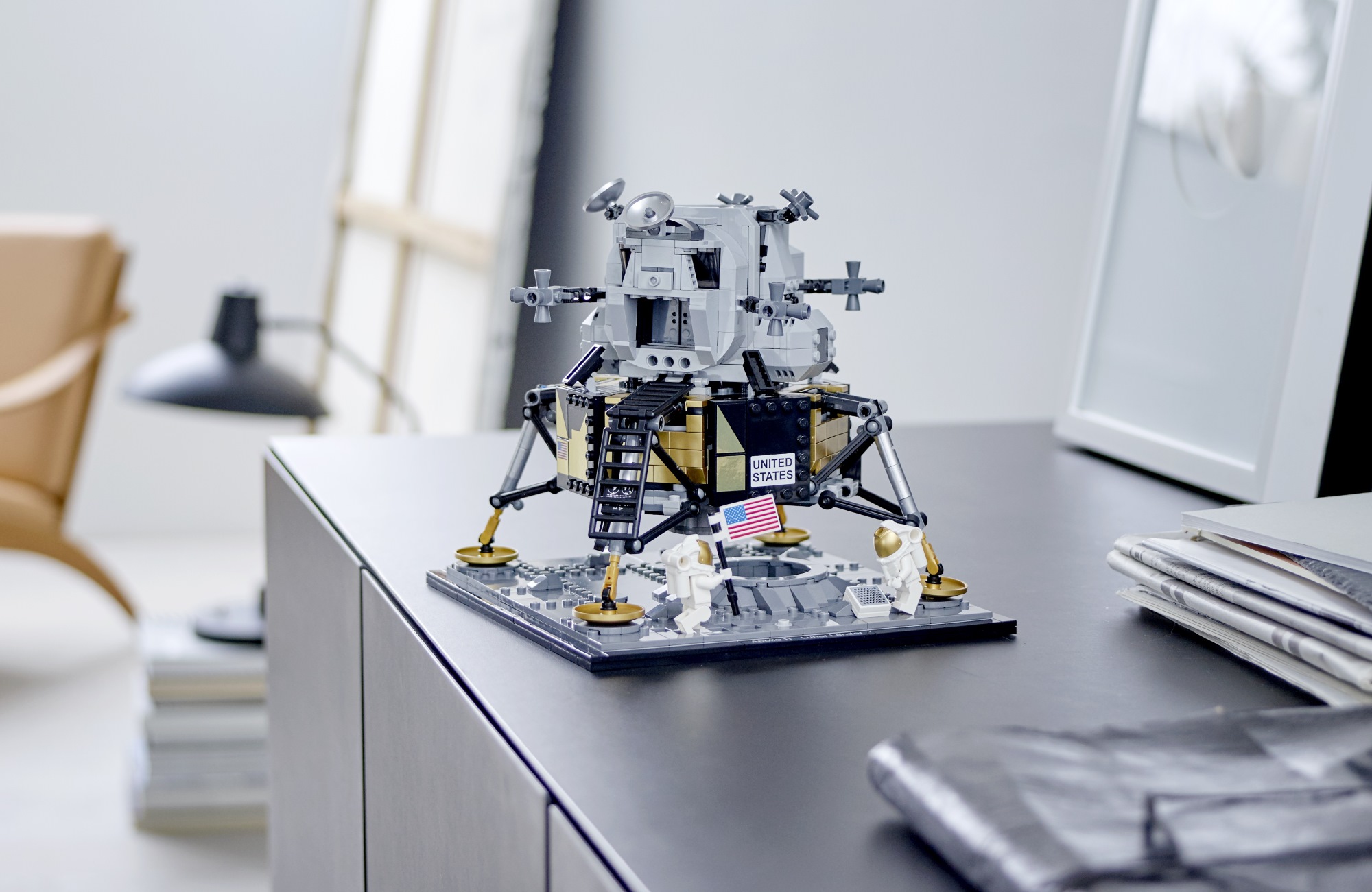
Nintendo Switch 32GB Gray Console (with Gray Joy-Cons)
ID: 352680735742
Auction price: $200.00
Bid count:
Time left: 29d 23h
Buy it now: $200.00
June 1, 2019 at 12:33AM
via eBay https://ebay.to/2EKBYUY http://bit.ly/2XlD1C6


 Paul Allen's space company, Stratolaunch Systems Corporation, is reportedly closing down its operations. According to Reuters, the company is shutting up shop, but it's also exploring the possibility of selling its assets and intellectual property. A...
Paul Allen's space company, Stratolaunch Systems Corporation, is reportedly closing down its operations. According to Reuters, the company is shutting up shop, but it's also exploring the possibility of selling its assets and intellectual property. A...




















We may not know much about Starfield, but by goodness are we excited. Bethesda's upcoming single-player RPG set in outer space marks the gaming giant's first new IP for 25 years.
But just what is the game about? And, more importantly, when will we actually be able to play it?
During the game's shock announcement at E3 2018, Bethesda boss Todd Howard called Starfield "our next-generation, single-player epic". However, Bethesda wouldn't divulge any more details apart from a short teaser trailer announcing the game and showing off its logo.
However that hasn't stopped us from boarding the hype train with a first-class ticket. There's nothing more exciting than whetting your appetite for a new game by future gazing (or star gazing in this case).
So, in that spirit, we've searched the galaxy to bring you the latest news and rumors on Starfield. Here's everything you need to know.
[Update: Starfield isn't likely to make an appearance at E3 2019. Read on to find out more.]
So far, what's been released is a title, trailer and, well, promise of greatness to come.
With details so thin on the ground, the earliest we'd expect to see a Starfield game would be 2020.
Bethesda Game Studios Director Todd Howard has stressed that "everyone should be very, very patient".
In Bethesda's E3 2018 presentation, Howard referred to the first Starfield game as "next-gen", suggesting it might not see a release before the next generation of consoles (either the PS5 and Xbox Two).
He might, however, just mean the game will use the capabilities of the PS4 and Xbox One's recent mid-cycle upgrades, in which case late 2019 or early 2020 would be a more likely window.
In an interview with Eurogamer, Howard elaborated:
"What systems we put it out on - what's the hardware requirements - is still to be determined. We're pushing it; we're thinking very, very far in future so we're building something that will handle next-generation hardware. That's what we're building on right now, that's where our mind is, but that doesn't mean it wouldn't exist on the current systems as well."
We saw our first glimpse of the game during E3 2018. it's not much more than a title and setting at this point, but the video does introduce us to an unnamed planet, a floating satellite or space station, and some sort of... glowing wormhole?
Check out the teaser trailer below:
Starfield may not be coming to E3 2019 after all
E3 is the place to announce exciting gaming news but it looks like Starfield won't be making much of an appearance at E3 2019. During a panel at PAX East which celebrated the 25th Anniversary of The Elder Scrolls, Todd Howard responded to a question about some photogrammetry tech being used in Elder Scrolls and Starfield with the news that "it’s going to be a long time! It’s not something we’re going to be talking about, either of those games, at E3 this year, and so patience, please”.
Bethesda's E3 2019 showcase dated and confirmed
Bethesda's E3 2019 showcase kicks off at 5.30pm PDT on Sunday June 9, with the horror shooter Doom Eternal taking center stage. But could we see some surprises too?
First announced at last year's E3 show, could we finally get a glimpse at Starfield? It's no secret that Starfield is a long time away from public consumption, but with the PS5 and Xbox Two apparently around the corner, we're hopeful that Starfield could be revealed alongside them. But, as stated above, it seems unlikely due to Howard's comments at PAX East.
A whole new world
Bethesda has reportedly been talking about making Starfield for years now.
There have been rumors flying around about the game since Bethesda publisher Zenimax filed a trademark for the name as far back as 2013.
Given how much mileage Bethesda has achieved out of its other tentpole IPs – Fallout and The Elder Scrolls, which have both seen various spin-off entries and MMO variants – it is presumably hoping to make Starfield a far-reaching franchise in the same vein.
...and whole new systems
The idea behind Starfield has been floating around as far back as 2004, and Howard has said it has the recognisable Bethesda DNA to it – so expect deep character customisation and open exploration. But also expect all new ideas entering into the mix – this won't just be Fallout or Skyrim in space. Speaking to Eurogamer, Howard stated "[...] it has a lot of new systems we've been thinking about for a while that fit that kind of game really well." So don't be surprised if there's some sort of on-theme space flight element involved too.
Bigger than ever before
Both the Elder Scrolls and Fallout series have shared a similar character progression system and open-world backdrop, partially rooted in their sharing of the same gaming engine.
While we haven't heard specifics on gameplay, Starfield looks set to follow in the same vein, albeit in a more galactic setting. But the final frontier could hold much larger potential for exploration, allowing players to travel across various planets and encounter unknown civilizations.
There's a big gap in the market for sci-fi RPGs
With the future of the space-opera RPG series Mass Effect looking uncertain, and the unfulfilled promise of the planet-hopping exploration game No Man's Sky, Starfield will be entering a gaming market hungry for a sci-fi RPG done right. With the proven success of Bethesda's other franchises, could the developer have the next Mass Effect up its sleeves?
(Image credits: Bethesda)
Keep checking back here for all the latest Starfield news














The 50th anniversary of Apollo 11 and the first lunar landing is approaching, and there will be no shortage of fanfare — so why shouldn’t LEGO get in on the fun? This Lunar Lander set looks like a great way to celebrate the missions of the space program’s past, while the space station and launch sets celebrate its present and future.
The Apollo 11 set looks like a real treat for both space-loving kids and parents — and grandparents — who remember or otherwise venerate the historic missions. LEGO worked with NASA to put together a replica Eagle lander that’s a lot like the original, though slightly smaller, of course.
 There are two astronauts, a crater and a flag — just like the real landing. And the detailed ascender module actually detaches and fits two minifigs inside. And, inquiring LEGO enthusiasts will want to know, there are some cool new gold-colored bricks that will surely make for lovely additions to your other brick-based space projects.
There are two astronauts, a crater and a flag — just like the real landing. And the detailed ascender module actually detaches and fits two minifigs inside. And, inquiring LEGO enthusiasts will want to know, there are some cool new gold-colored bricks that will surely make for lovely additions to your other brick-based space projects.
Apollo is what we’re celebrating, but Artemis is what’s ahead of us. The next moon mission will involve quite a few interesting pieces of hardware, though nothing is finalized yet — so you can excuse LEGO for improvising a bit. (I feel sure the Shuttle design has been ruled out, though.)
[gallery ids="1834260,1834255,1834261,1834258"]
The launch control set looks great: an actual mission control area, an astronaut-delivery rail car and a convincing rocket that could be the Space Launch System. There’s also a fairly realistic space station setup, with segments you can connect in various ways and a cool airlock I would have loved to have when I was an avid builder.
I like that these aren’t huge — kids shouldn’t get the wrong idea about space travel. It’s like crawling into a hot can and being rolled down a hill, then you live in the can for months constantly smelling the other astronauts’ breath. At the end of it, you’re at Mars, sure — but it’s not exactly first-class.
Making spaceships out of LEGO is a highlight of my childhood, and one in which I still indulge now and then, but I never felt particularly constrained by reality. I think it’s great that these sets provide that option — even if they’re fantasy, they’re definitely quasi-realistic, and when kids see the Lunar Gateway in a few years they’ll think, huh, looks a lot like what I built a while back. So far that hasn’t happened with any of my ships.
Head over to the LEGO Shop to grab your own set.
If Shrek saw Matebot, no amount of sad-eyes could win him back to Puss in Boots’ side. Created by Shenzhen-based robotics company Ekasbo, Matebot looks like a black and white cartoon cat and responds to your touch by wiggling its ears, changing the expression in its big LED eyes and tilting its head.

Built with voice recognition, infrared technology and seven moving parts, the Matebot is designed to serve as an interactive companion, including for people who can’t keep pets, creator Zhang Meng told TechCrunch at Computex in Taiwan.
Met Matebot the cat robot today! pic.twitter.com/jJaa5EhKC8
— Computex Shu (@CatherineShu) May 30, 2019
The Matebot is controlled with a smartphone app and can be integrated with Android voice control systems. Its price starts at about 4,999, yen or about US$45.
Tired of home security cameras that add nothing to your home (besides, well, surveillance)? The Ulo, created by Luxembourg-based Mu Design, adds a touch of whimsy. The owl-shaped surveillance camera has two big interactive LCD eyes that follow your movements, and two lenses — an HD camera and a motion sensor camera — discreetly hidden in its beak, made of one-way mirrored glass, that capture high-resolution images.
Mu Design founder Vivien Muller, who is currently showing off Ulo at Computex in Taipei, said he wanted to create a security camera that feels like a pet and makes its owners happy. The Ulo, with its huge, expressive eyes, is certainly adorable. Ulo runs on a Qualcomm Snapdragon 212 series processor and is made with an internal microphone, Wi-Fi and Bluetooth models and an orientation sensor. It can use rechargeable NiMH batteries or be charged with a standard micro USB charger. Ulo also boosts 8GB eMMC and a microSD card slot.
Ulo is controlled by iOS or Android apps. Like other cameras, it can send images to your email when movement is detected, send data to secure devices if requested and store a few minutes of video locally.
The camera is currently out of stock, but available for pre-order and costs €199, or about $220.